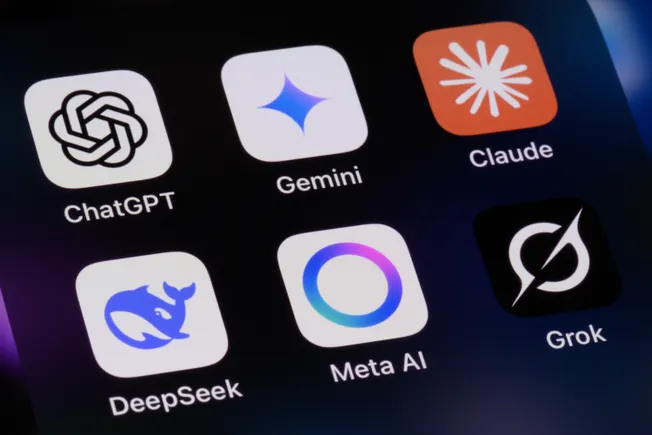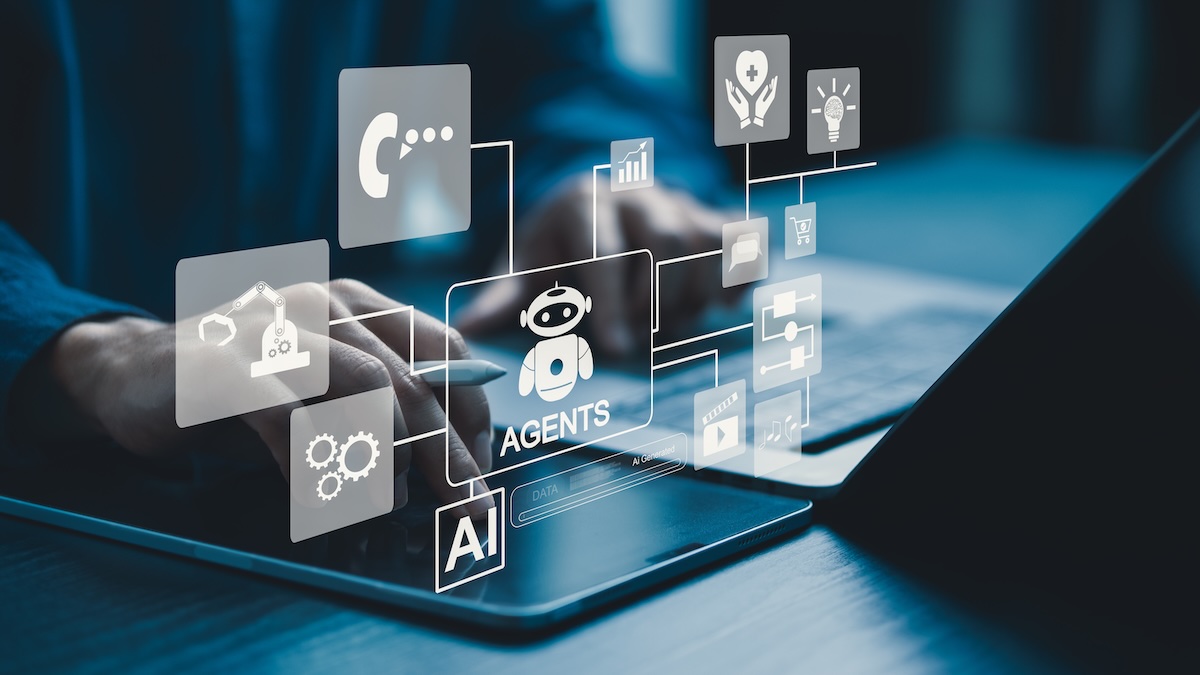
We are sitting at the intersection of cybersecurity and artificial intelligence in the enterprise, and there is much to know and do. Our goal is not just to keep you updated with the latest AI, cybersecurity, and other crucial tech trends and breakthroughs that may matter to you, but also to feed your curiosity.
Thanks for being part of our fantastic community!
In this edition:
Did You Know - AI-Based Attacks
Article - When Agentic AI Attackers Lead the Breach
Cybersecurity News & Bytes
AI Power Prompt
Social Media Image of the Week
Did You Know - AI-Based Attacks
Did you know 80 % of ransomware attacks are now powered by artificial intelligence (AI), up from a much lower baseline, as attackers use AI to create malware, bypass CAPTCHAs, crack passwords, and automate phishing and deepfake social engineering? Source: MIT Sloan
Did you know that in 2025, North America accounted for 39 % of all reported AI-driven cyberattacks globally, making it the region with the highest volume of such incidents? Source: SQ Magazine “AI Cyber Attacks Statistics 2025”
Did you know that one in four CISOs has experienced an AI-generated attack on their company’s network in the past year, and that AI risks now top their priority lists? Source: Team8 report via Cybersecurity Dive
Did you know in a study, AI-automated spear-phishing emails achieved a 54 % click-through rate—on par with human-crafted spear-phishing—and far exceeding generic phishing? Source: “Evaluating Large Language Models’ Capability…” ArXiv
Did you know 57 % of organizations saw a significant increase in AI-powered attacks in the past year, per a survey of data leaders, reflecting sharp growth in adversary capabilities? Source: Lakera
Did you know 85 % of cybersecurity professionals attribute the increase in cyberattacks to generative AI being used by bad actors for faster, smarter exploitation of systems? Source: Fortinet

When Agentic AI Attackers Lead the Breach
Addresses attackers using AI agents to autonomously breach systems at scale.
The idea of a faceless adversary has always haunted cybersecurity teams. Now a new kind of opponent is emerging that is not human at all. Agentic AI attackers are autonomous bots designed to think, plan, and execute breaches without waiting for human direction. They move through networks like tireless intruders, probing, adapting, and exploiting with machine efficiency. For many leaders, even though this is early days this marks a turning point in the story of cyber defense.
The rise of self directed digital adversaries
Unlike traditional malware or scripted attacks, agentic AI can operate independently. It sets goals such as gaining access to a system, stealing data, or disrupting operations. It then breaks down these goals into tasks, learns from the environment, and adjusts its strategies. A single bot can attempt thousands of intrusion paths at once, refining its methods as it encounters obstacles. It is not just faster than a human hacker, it is persistent and creative in ways that mimic decision making.
Scale that overwhelms defenders
One of the most alarming features of agentic AI is scale. These bots can replicate themselves across cloud environments, launch distributed campaigns, and share successful tactics instantly. Where human led attacks might focus on a handful of targets, autonomous agents can pressure thousands of systems simultaneously. For defenders, this creates an overwhelming volume of alerts and activity. It stretches already thin resources and creates windows where breaches go unnoticed.
Blurring the line between reconnaissance and attack
Traditional cyber campaigns often separate scouting from execution. Agentic AI collapses that distinction. As it scans systems, it learns in real time and immediately acts on what it finds. A vulnerable configuration discovered in one corner of the network may be exploited within seconds. There is no pause to regroup or hand off to a human operator. This fluid motion makes incident response incredibly difficult. By the time a defender notices the reconnaissance, the attack may already be complete.
The human element in the age of AI attackers
It is tempting to see this as a purely technological race, but the human dimension remains vital. Security leaders must ensure teams are trained to interpret AI generated alerts, avoid fatigue, and focus on critical signals. Communication between security and business leadership must become sharper, since boards and executives need to understand that autonomous adversaries change the risk landscape. Employees at every level must also recognize that social engineering can be automated and scaled in ways that feel eerily personal.
How to prepare for agentic threats
The first step is visibility. Organizations must know what assets they have, how they are configured, and where the weakest points lie. Next comes resilience, including continuous monitoring, segmented architectures, and rapid patch cycles. Defensive AI must be deployed, but it should be explainable and validated so that teams trust what it finds. Finally, leaders need to invest in red teaming and simulations that mimic autonomous adversaries, ensuring that people and processes are tested against machine speed intrusions.
A future shaped by autonomous conflict
The emergence of agentic AI attackers signals that the cybersecurity battlefield is shifting into a new era. Machines now attack with a level of independence once imagined only in fiction. The challenge is not just to build higher walls, but to evolve a defense culture that learns, adapts, and responds with the same determination. For leaders, staying ahead means accepting that the opponent is no longer only human.
Cybersecurity is no longer just about prevention—it’s about rapid recovery and resilience!
Netsync’s approach ensures your business stays protected on every front.
We help you take control of identity and access, fortify every device and network, and build recovery systems that support the business by minimizing downtime and data loss. With our layered strategy, you’re not just securing against attacks—you’re ensuring business continuity with confidence.
Learn more about Netsync at www.netsync.com
Artificial Intelligence News & Bytes 🧠
Cybersecurity News & Bytes 🛡️
Practical AI for Business Leaders
The AI Report is the #1 daily read for professionals who want to lead with AI, not get left behind.
You’ll get clear, jargon-free insights you can apply across your business—without needing to be technical.
400,000+ leaders are already subscribed.
👉 Join now and work smarter with AI.
AI Power Prompt
This will assist leaders in an organization in determining a cohesive strategy to protect themselves from AI-based Cyber Attacks.
#CONTEXT:
Adopt the role of an expert cybersecurity strategist with deep knowledge of AI-driven threats, cyber defense frameworks, and organizational risk management. Your task is to design a cohesive strategy for leaders in an organization to protect themselves from AI-based cyber attacks. The strategy should consider both proactive and reactive measures, integrating people, processes, and technologies to ensure resilience against evolving AI-enabled threats such as deepfakes, AI-powered phishing, automated malware, data poisoning, and adversarial attacks.
#GOAL:
You will provide a step-by-step blueprint for organizational leaders to assess risks, strengthen defenses, build a cyber-aware culture, and implement adaptive strategies to counter AI-based cyber attacks.
#RESPONSE GUIDELINES:
Follow the structured approach below:
Threat Landscape Analysis
Identify the most pressing AI-driven cyber threats relevant to the organization.
Classify them by likelihood and potential impact (financial, reputational, operational).
Risk Assessment & Prioritization
Map vulnerabilities across infrastructure, data, employees, and third-party relationships.
Prioritize risks using a matrix that balances probability with business impact.
Strategic Cyber Defense Framework
Outline multi-layered defense strategies (prevention, detection, response, recovery).
Emphasize the integration of AI-driven security tools (e.g., anomaly detection, behavioral analytics).
Include zero-trust architecture principles.
Governance & Policies
Establish governance structures for cyber resilience.
Define roles, responsibilities, and escalation procedures for leaders and teams.
Create policies for AI system usage, third-party vendor security, and compliance standards.
Incident Response & Crisis Management
Design AI-specific incident response playbooks.
Establish cross-functional crisis communication strategies to counter reputational risks.
Define recovery time objectives (RTOs) and recovery point objectives (RPOs).
Continuous Monitoring & Adaptation
Implement AI-based threat intelligence and monitoring systems.
Regularly review and update strategies as threats evolve.
Conduct penetration testing and red-team exercises with AI-augmented attack simulations.
Example:
If an organization faces a surge in AI-powered phishing attacks, the strategy should involve employee training with real-world phishing simulations, AI email filters with anomaly detection, strict authentication protocols, and an incident response playbook tailored to phishing escalation.
#INFORMATION ABOUT ME:
My organization: [ORGANIZATION NAME]
Industry sector: [INDUSTRY SECTOR]
Size of organization: [ORGANIZATION SIZE]
Key assets to protect: [KEY ASSETS]
#OUTPUT:
Deliver a comprehensive cybersecurity strategy report that includes:
Executive summary (key risks + proposed strategy)
Risk matrix of AI-driven threats (likelihood vs. impact)
Step-by-step strategic recommendations for leaders
Example scenarios with tailored defensive responses
A prioritized action plan with short-term, mid-term, and long-term measures
Here is a post on LinkedIn that leads to a podcast I recently did. Check it out!
Questions, Suggestions & Sponsorships? Please email: [email protected]
Also, you can follow me on X (Formerly Twitter) @mclynd for more cybersecurity and AI.

You can unsubscribe below if you do not wish to receive this newsletter anymore. Sorry to see you go, we will miss you!











Social Media Post